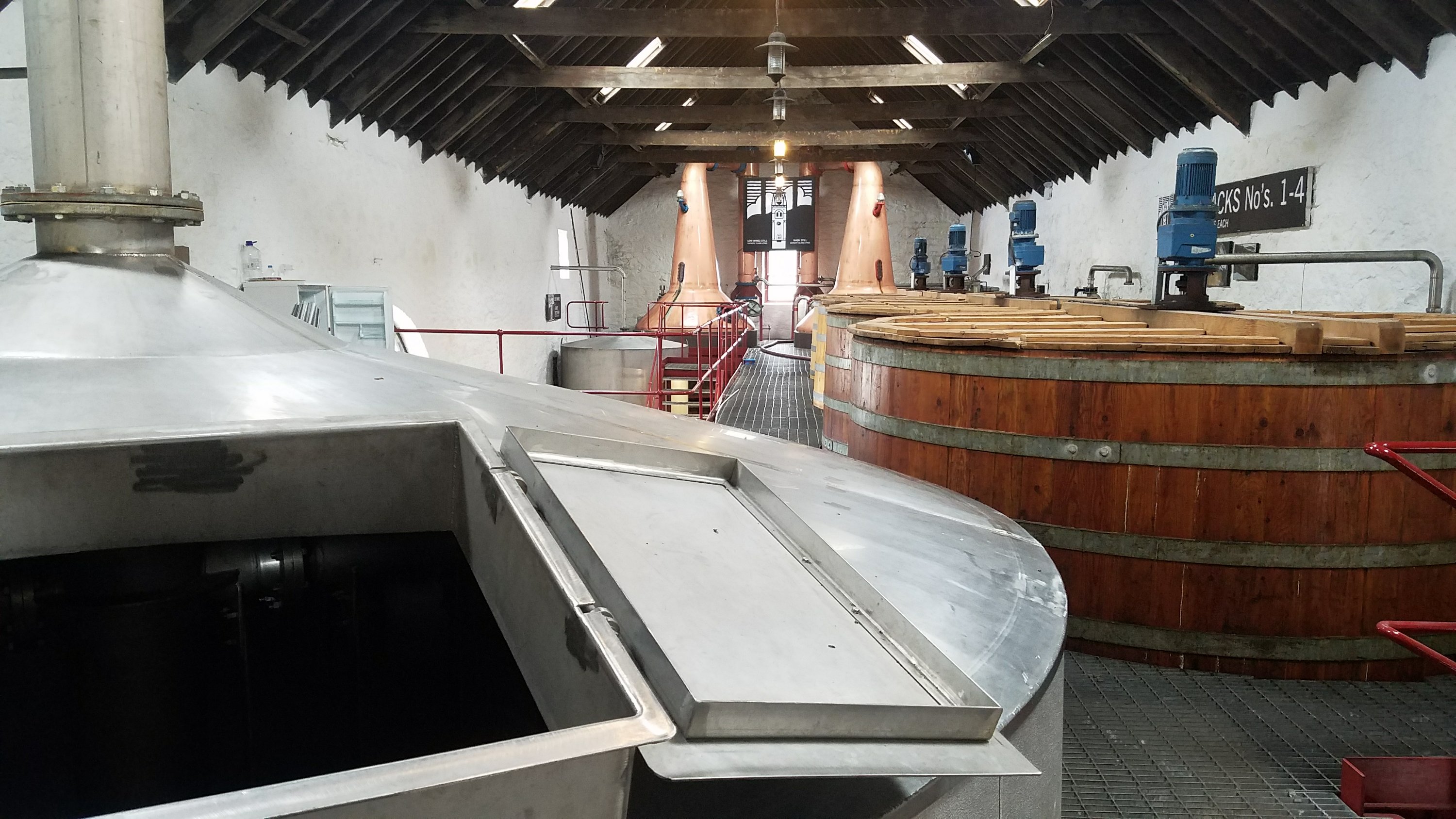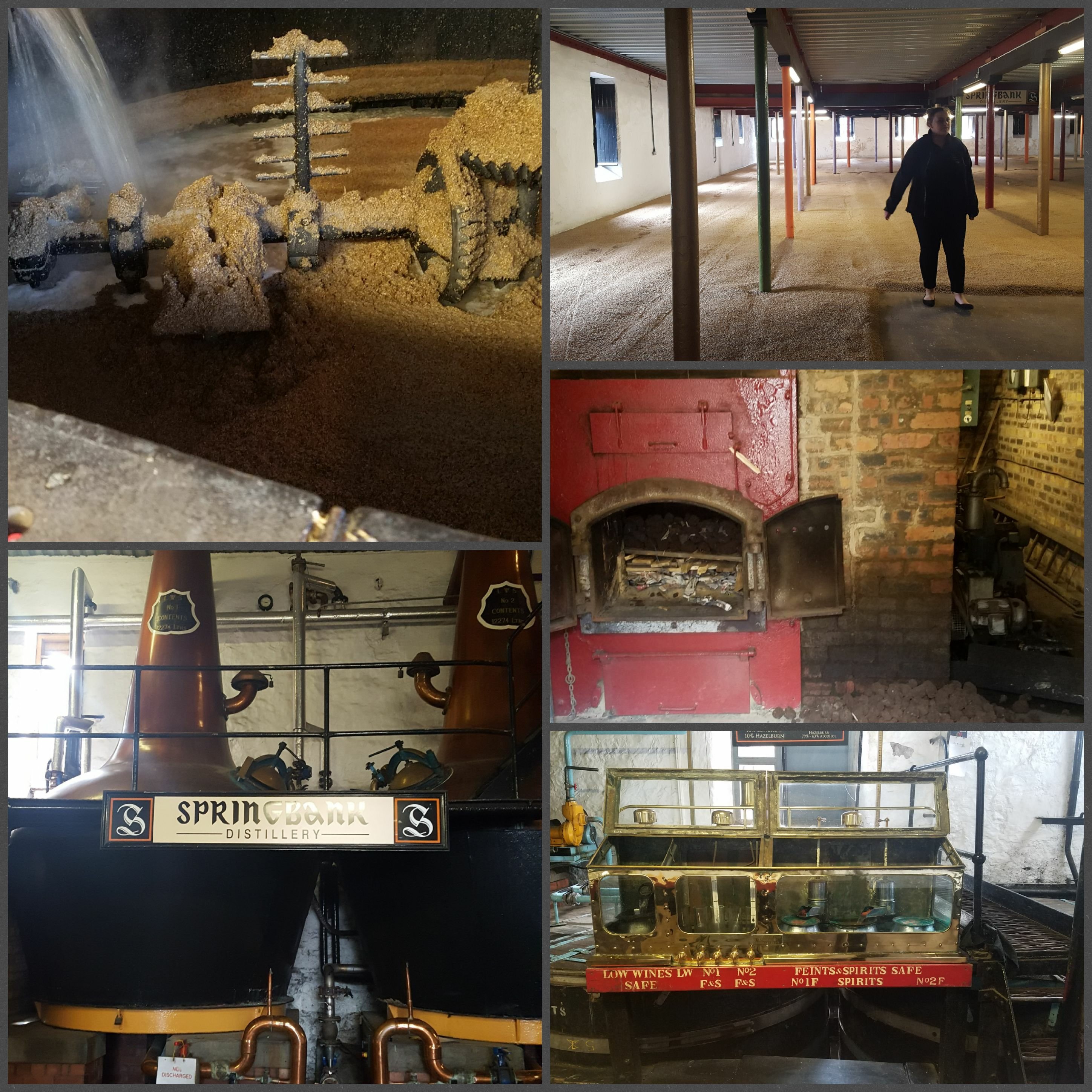
Day 9 - We're doing it live (Campbeltown)
We woke up early so we could take a nice morning walk to a scenic viewpoint above Oban. It's very brisk this close to the sea, and we had to put on more layers than we've had to all trip to deal with the chill. We hiked up to Pulpit Lookout and took in the scenery.
On walking back to the hotel we went over what we wanted to do today. We both realized that while we'd made this a major stop on our trip, it was more of a convenient distillery we recognized by name than something either of us really cared about. I like Oban 14, but it's not really my favorite, and Susan is interested in history (of which there is little in Oban).
We had planned to be in Inverness at the end of today, but we didn't plan any activities there. Neither of us felt like taking another down day, so we did something wild and impulsive - we scrapped today's plan entirely and drove to Campbeltown.
This was decidedly not in style for us. We like to plan the major logistical overtures months in advance so we can explore freely inside a basic structure. The most impulsive thing we're likely to do on vacation is to see one attraction or historical site instead of another, but usually within the scope of the same city center. Adding 150 miles of wrong-side-of-the-road driving on a whim is a bigger commitment, not to mention figuring out last minute hotel bookings.
The drive to Campbeltown was downright harrowing. The A road from Oban has a 60mph speed limit, but it's narrower than the ones around Loch Lomond. There were several single-lane bridges that were dangerously close to blind corners, and I had to make a few short stops to yield to oncoming traffic. Also, our Google Maps app diverted us down a single-lane timber road for a few miles as if to say, "is this scenic enough for you?" Two close calls later we were back on the main road, which straightened out and went by faster than we expected. We arrived about 12:30 PM.

Campbeltown is big on whisky, and especially rich with whisky history. This used to be known as "the whisky capital of the world" with 35 legal distilleries in late 1800s. I say "legal distilleries" because the 35 distilleries that were registered with the authorities could not have produced the amount of whisky that was shipped out of the harbor. According to our tour guide, the single town plumber who built stills made over 400, but the legitimate distilleries accounted for no more than 200. There are now only 3 remaining single-malt distilleries: Glengyle, Glen Scotia, and Springbank.
Distillery Tours
We toured Glengyle and Springbank. It turns out that they're both owned by the same company, but operated very differently. The Scotch Whisky Society was about to revoke Campbeltown's status as a whisky producing region due to it only having 2 distilleries, and the Springbank owners wanted to keep their status as real Scotch Whisky makers. Springbank bought the old Glengyle distillery and funded the startup cost for a much more modern facility. They only run production for 12 weeks out of the year, but the whisky (called Kilkerran) is excellent and very different from Springbank.

Almost all of Glengyle's equipment is secondhand, but it's a much more automated system than Springbank's. The still arms leading into the condenser are angled up to force heavier vapors to fall back into the still, producing a light bodied whisky with a spicy character.

Springbank
Springbank is the oldest family owned and operated distillery in Scotland. They still largely do things using 19th century technology, but it works for them and they prefer to employ locals instead of computers.
The whole staff was on site making runs of Springbank as we toured. We got to walk through the malting room filled with germinating barley, peek into the mash tun during it's second wash, smell the fermenting wort in the washbacks, and watch the raw spirit run out of the condenser. All of this equipment is old, and most of the manufacturers have gone out of business (their equipment never needing to be replaced once purchased). It's one thing to know how whisky is made, but it's quite another to be there and watch it happen.

As a fun note, Springbank's still arms are angled downwards toward the condenser, meaning they collect the heavier vapors. This produces a more full-bodied whisky than the Kilkerran. Springbank also uses this distillery and these stills to produce a triple-distilled whisky (sold as Hazelburn) and a peated Campbeltown whisky (sold as Longrow).
Both Springbank and Glengyle distilleries age their whisky in bourbon and sherry casks for their tasting notes, and use different ratios to produce distinctive tastes. While bourbon casks are easy to obtain thanks to the booming American bourbon industry (USA! USA!) sherry has unfortunately gone out of vogue and casks of sherry cost ten times more than bourbon casks. We were specifically asked during our tours to ask our friends and family to buy a bottle of sherry now and then to keep the whisky industry in Campbeltown alive and well.
All of the whiskys we tasted on these tours were incredible. Each had a unique salty character that expressed itself in flavors and aromas ranging from pears, to carmel, and even blue cheese. Susan got to try a cask strength Longrow that had all of the peat smoke we love in Islays but with the richness of the Campbeltown malts. Susan and I will probably be stocking Campbeltown whisky regularly after this trip.
Tomorrow we look forward to a 200 mile, 5 hour drive across most of the country.
